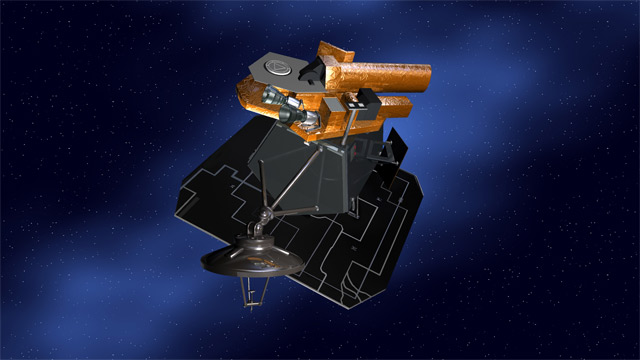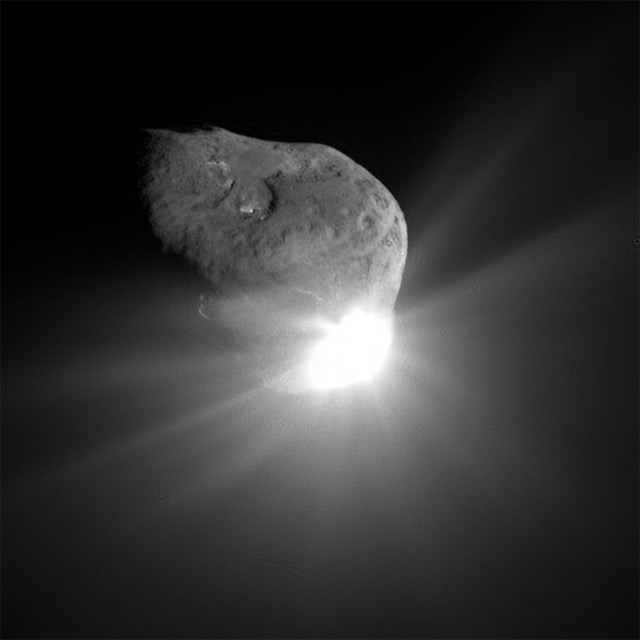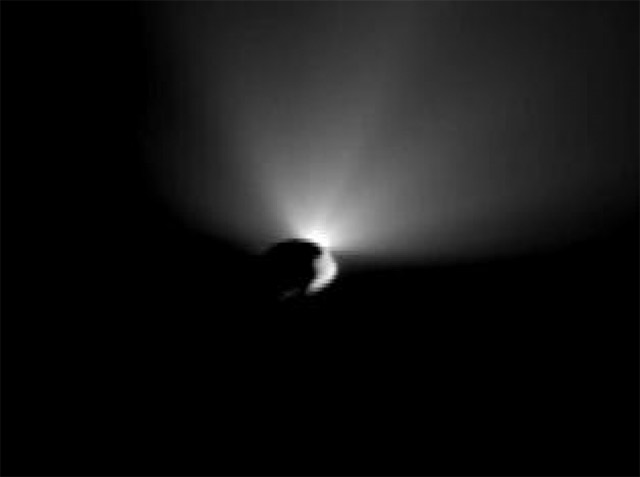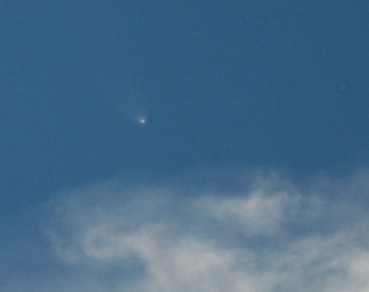Deep Impact lost due to software failure
NASA has officially acknowledged the loss of the Deep Impact spacecraft and ceases to attempt to contact it. Radio communication with the device was lost in August, presumably due to software failure. Since then, engineers have tried to make contact, but to no avail.

Deep impact
Deep Impact is a spacecraft launched in 2005 to study Comet Tempel 1. He managed to drop a 370-pound copper probe-impactor onto a comet, which rammed the surface of a cosmic body, taking pictures of the comet's core from close range. A kind of space show with flash and release of firework dust took place on July 4, 2005, right on Independence Day.

A flash on the surface of Comet Tempel 1
')

Cloud of dust behind the comet after the collision
After that historical mission Deep Impact still flew a lot around the solar system. In November 2010, he came close to a distance of 700 km with the nucleus of the comet 103P / Hartley.
The last successful communication session with the device happened on August 8, 2013. According to preliminary estimates, the connection was broken due to an unknown failure of the computer program Deep Impact. For several weeks, experts tried to transfer commands to onboard computer systems. The analysis shows some software failures with time stamping in the onboard system, which is why Deep Impact lost orientation in space - and, accordingly, lost its ability to send radio antennas to Earth, which made communication difficult. Due to the loss of orientation, the solar panels turned away from the Sun, which probably has already led to a loss of energy, freezing of the battery and onboard systems. So now there is no point in continuing attempts to revive the device.
It's time to say goodbye to the veteran of space missions. During its service, Deep Impact not only fulfilled the main mission, but also a few additional ones. "He overcame 7.58 billion km, transferring much more scientific data to Earth than originally planned," according to a NASA press release. In total, Deep Impact transmitted approximately 500,000 photographs of various astronomical objects to earth.
At the time of his death, Deep Impact was also on a mission - he was heading for a meeting with comet ISON , which amateur astronomers from Belarus and Russia discovered in September 2012. It was assumed that this comet first flew into the solar system, so its study could be interesting. By the way, from November 2013 to January 2014 this comet can be observed in the sky with the naked eye. Since its brightness will be comparable to the brightness of the Moon, comet ISON claims to be the brightest comet of the first half of the 21st century.


Deep impact
Deep Impact is a spacecraft launched in 2005 to study Comet Tempel 1. He managed to drop a 370-pound copper probe-impactor onto a comet, which rammed the surface of a cosmic body, taking pictures of the comet's core from close range. A kind of space show with flash and release of firework dust took place on July 4, 2005, right on Independence Day.

A flash on the surface of Comet Tempel 1
')

Cloud of dust behind the comet after the collision
After that historical mission Deep Impact still flew a lot around the solar system. In November 2010, he came close to a distance of 700 km with the nucleus of the comet 103P / Hartley.
The last successful communication session with the device happened on August 8, 2013. According to preliminary estimates, the connection was broken due to an unknown failure of the computer program Deep Impact. For several weeks, experts tried to transfer commands to onboard computer systems. The analysis shows some software failures with time stamping in the onboard system, which is why Deep Impact lost orientation in space - and, accordingly, lost its ability to send radio antennas to Earth, which made communication difficult. Due to the loss of orientation, the solar panels turned away from the Sun, which probably has already led to a loss of energy, freezing of the battery and onboard systems. So now there is no point in continuing attempts to revive the device.
It's time to say goodbye to the veteran of space missions. During its service, Deep Impact not only fulfilled the main mission, but also a few additional ones. "He overcame 7.58 billion km, transferring much more scientific data to Earth than originally planned," according to a NASA press release. In total, Deep Impact transmitted approximately 500,000 photographs of various astronomical objects to earth.
At the time of his death, Deep Impact was also on a mission - he was heading for a meeting with comet ISON , which amateur astronomers from Belarus and Russia discovered in September 2012. It was assumed that this comet first flew into the solar system, so its study could be interesting. By the way, from November 2013 to January 2014 this comet can be observed in the sky with the naked eye. Since its brightness will be comparable to the brightness of the Moon, comet ISON claims to be the brightest comet of the first half of the 21st century.

Source: https://habr.com/ru/post/194922/
All Articles